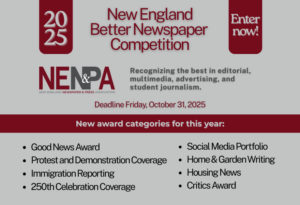 Entries are now open for this year’s New England Better Newspaper Competition, and this year’s contest is bigger and better than ever!
Entries are now open for this year’s New England Better Newspaper Competition, and this year’s contest is bigger and better than ever!
To reflect the evolving landscape of journalism, we’ve added eight new award categories designed to showcase innovation, community impact, and diverse storytelling. These new additions recognize the creative ways journalists are connecting with audiences — from social media and lifestyle writing to coverage of critical issues shaping our region.
New award categories (descriptions below):
- Social Media Portfolio
- Home & Garden Writing
- Housing News
- Critics Award
- Good News Award
- Protest and Demonstration Coverage
- Immigration Reporting
- 250th Celebration Coverage
Whether you’re an investigative reporter, a feature writer, a student journalist, or part of a newsroom team, there’s a place for your work in this year’s competition. We can’t wait to see the stories, photos, and projects that have made a difference in your communities.
The Better Newspaper Competition remains New England’s largest and most prestigious journalism awards program, honoring the skill, passion, and dedication that fuel outstanding local news coverage across all platforms.
Work published by NENPA member news organizations during the contest year, August 1, 2024, to July 31, 2025, is eligible for this competition.
The competition has three divisions:
- Editorial/Multimedia/Photography Division – Download Editorial Information Packet
- Advertising/Circulation/Promotion Division – Download Advertising Information Packet
- College/University Division – Download College Information Packet
Download the information packets, where you will find all of the information necessary to prepare your entries, including a list of competitive categories, complete rules and guidelines, and the criteria that each contest category will be judged upon.
To get started, follow these easy steps:
- Go to www.newspapercontest.com/nenpa to register.
- The portal resets each year, so you’ll need to register even if you entered last year.
- Create a password. (We don’t store last year’s password, so you’ll need to set a new one. You can reuse the same password if you wish.)
- Enter the Association Code: NENPA
The final deadline for all entries is Friday, November 14, 2025.
Awards will be presented at the annual New England Newspaper Convention in Spring 2026 (location and dates to be announced soon).
We wish you the very best of luck in this year’s competition! If questions come up while preparing your entries, please email L.Conway@nenpa.com or T.Cleary@nenpa.com.
New Award Categories
Social Media Portfolio – This category recognizes consistent outstanding storytelling published on your newsroom’s social media channels. Judges will consider creative and effective use of multimedia elements such as video, audio, photography, graphics, and more. Submit three examples from platforms like TikTok, Instagram, Facebook, YouTube, or others that show your best work.
Home & Garden Writing – This award honors home and garden writing that combines creativity, service, and storytelling to inspire and inform readers. It recognizes work that offers fresh perspectives on how people live, design, and grow—whether through practical advice, design features, cultural insight, or profiles of local homes and gardens. Entries should demonstrate excellence in writing, visual presentation, and relevance to contemporary lifestyles.
Housing News – This category highlights impactful coverage of housing-related issues such as affordability, development, zoning, homelessness, displacement, tenants’ rights, and the politics and economics of housing. It recognizes journalism that delivers clear, in-depth coverage relevant to the local community.
Critics Award – An article, essay, column or review on any entertainment or culture topic, including (but not limited to) theatre, book, music, movie, and dining reviews. Entries must be written by full- or part-time members of the newspaper staff, or written exclusively for the newspaper submitting the entry
Good News Award – For outstanding journalism that highlights the uplifting, heartwarming, and hopeful stories that remind us of the good in the world. Whether spotlighting acts of kindness, everyday heroes, resilient communities, or creative solutions, these stories should be thoughtfully reported and beautifully told. Judges will look for originality, emotional resonance, and storytelling that goes beyond clichés—leaving readers informed, inspired, and maybe even smiling.
Protest and Demonstration Coverage – Honoring excellence in local journalism that covers protests and civil demonstrations with depth, integrity, and impact. It recognizes journalists and newsrooms that bring attention to community voices, uncover the roots of civic unrest, and provide accurate, courageous, and ethically sound reporting—often under challenging or high-risk conditions. Entries should reflect a strong commitment to fairness, context, and storytelling that elevates public understanding.
Immigration Reporting – This award honors outstanding journalism that illuminates the complexities of immigration with accuracy, depth, and humanity. It recognizes work that elevates underrepresented voices, holds institutions accountable, and deepens public understanding of immigration issues through ethical, impactful, and innovative storytelling. Entries will be judged on quality and clarity of writing, and importance to the local community.
250th Celebration Coverage – This award celebrates outstanding journalism that explores and illuminates the significance of America’s 250th anniversary. Entries should demonstrate journalistic excellence while offering meaningful insight into the nation’s history, identity, and future. Submissions may address themes such as democracy, civil rights, civic engagement, local or national unity and division, or underrepresented narratives that shape the American experience. Judges will consider work that is accurate, original, impactful, and inclusive—using powerful storytelling to connect past and present as the country marks this historic milestone.

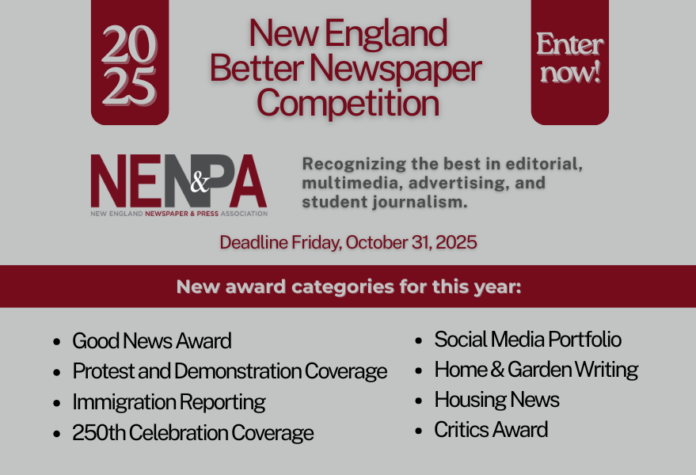
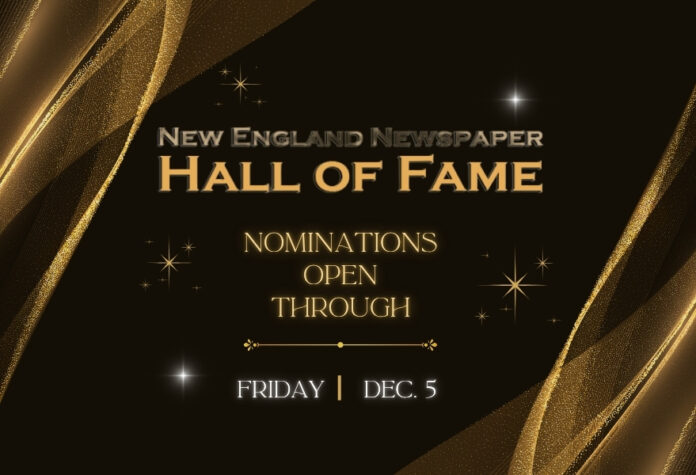
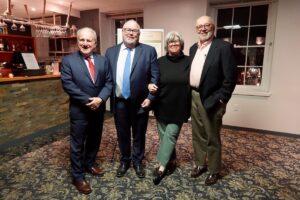

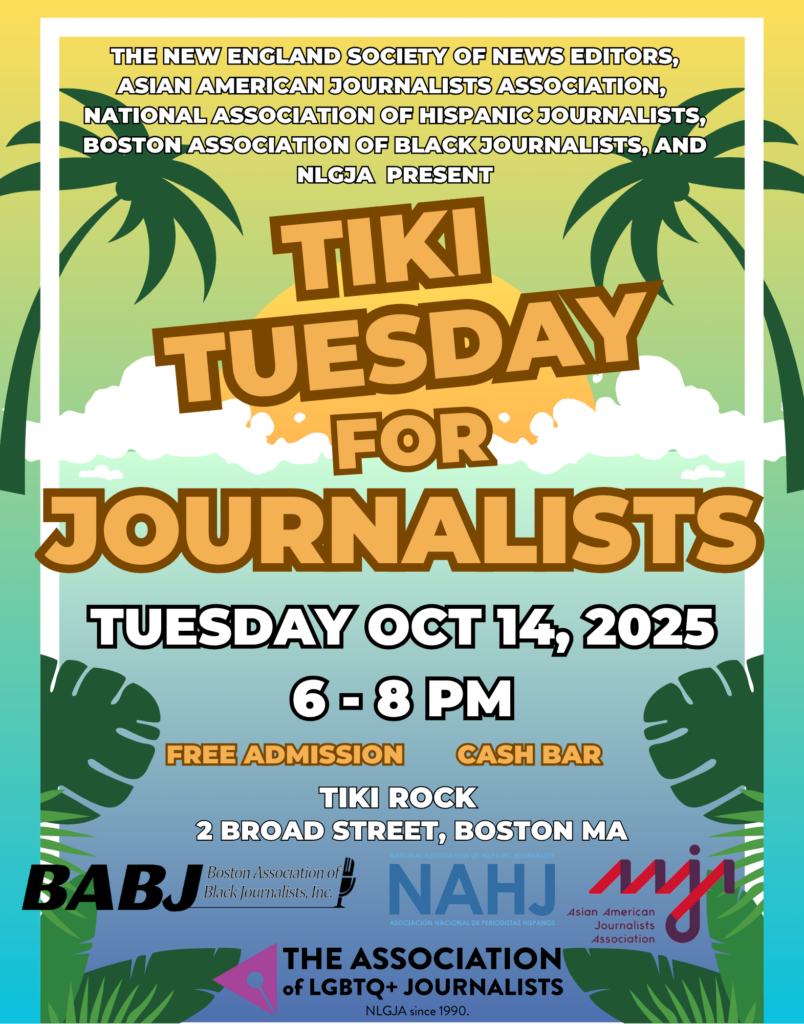 A great time was had by all at The Dubliner in Boston during the September journalist meetup, where a lively crowd of media professionals gathered for trivia, conversation, and plenty of laughs. The event brought together journalists from across New England to connect, collaborate, and unwind in a relaxed and friendly setting.
A great time was had by all at The Dubliner in Boston during the September journalist meetup, where a lively crowd of media professionals gathered for trivia, conversation, and plenty of laughs. The event brought together journalists from across New England to connect, collaborate, and unwind in a relaxed and friendly setting.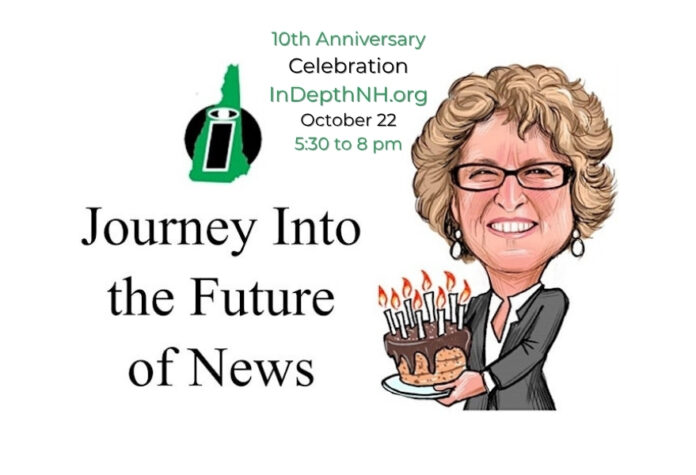
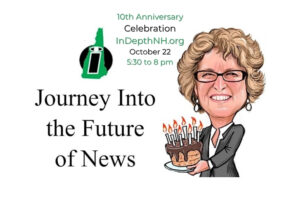 The
The 
 We’re thrilled to announce the opening of this year’s New England Better Newspaper Competition! We are introducing eight new award categories to spotlight emerging voices and honor excellence across a broader range of reporting and storytelling.
We’re thrilled to announce the opening of this year’s New England Better Newspaper Competition! We are introducing eight new award categories to spotlight emerging voices and honor excellence across a broader range of reporting and storytelling.
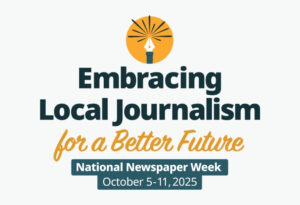 This year marks the 85th celebration of National Newspaper Week, October 5-11, 2025, sponsored by Newspaper Association Managers since 1940. The celebration recognizes the essential role newspapers play in keeping our communities informed, connected, and engaged. NENPA is proud to complement this national effort through the
This year marks the 85th celebration of National Newspaper Week, October 5-11, 2025, sponsored by Newspaper Association Managers since 1940. The celebration recognizes the essential role newspapers play in keeping our communities informed, connected, and engaged. NENPA is proud to complement this national effort through the 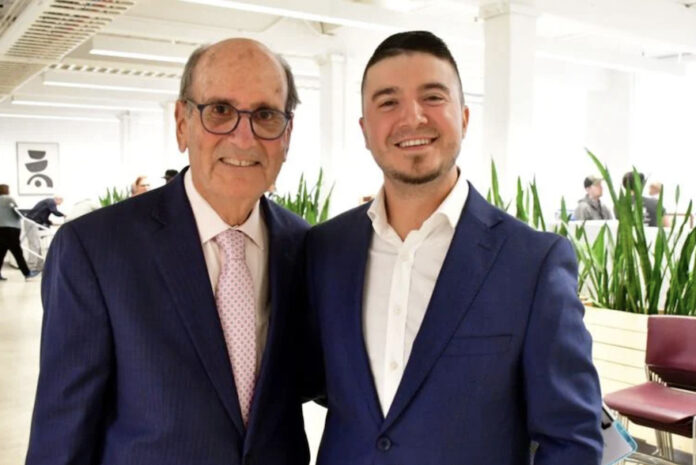
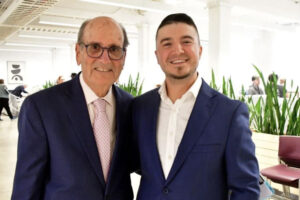

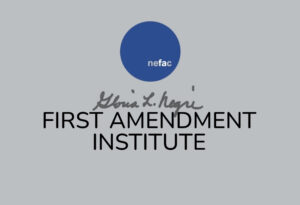 The New England First Amendment Coalition is pleased to announce the incoming class of fellows for its 2025 Gloria L. Negri First Amendment Institute.
The New England First Amendment Coalition is pleased to announce the incoming class of fellows for its 2025 Gloria L. Negri First Amendment Institute.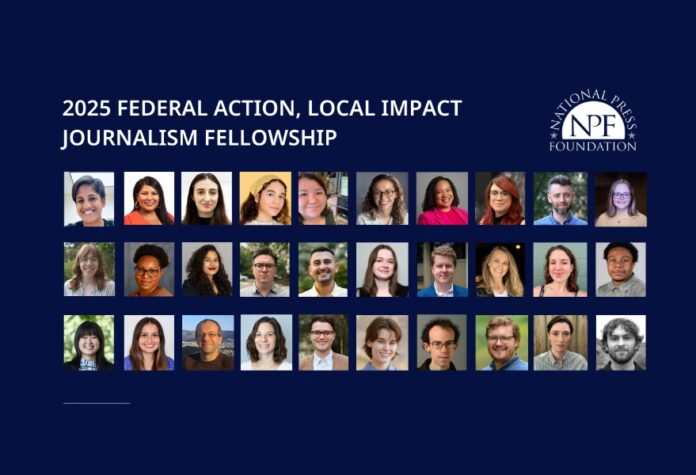
 The National Press Foundation has selected 30 journalists for its 2025 Federal Action, Local Impact Journalism Fellowship to be held in Washington, D.C., Oct. 7-9. The journalists selected include two from New England:
The National Press Foundation has selected 30 journalists for its 2025 Federal Action, Local Impact Journalism Fellowship to be held in Washington, D.C., Oct. 7-9. The journalists selected include two from New England:
Freedom Forum Survey Finds 90% of Americans Believe the First Amendment is Vital, yet Only 1 in 10 Can Name All Five Freedoms
This year’s survey, conducted in partnership with McKee Wallwork from Aug. 1-8, polled Americans on their knowledge of First Amendment freedoms, their personal experiences with free expression and their views on issues ranging from campus protests and AI censorship to religious liberty, hate speech and the role of the press.
Freedom Forum’s 2025 “Where America Stands” survey reveals that while Americans overwhelmingly believe in the importance of the First Amendment, confusion and gaps in understanding persist, especially around the freedoms it guarantees and how they apply to everyday life.
95% of Americans have heard of the First Amendment, and nine in 10 agree it is vital. Yet only 10% can name all five freedoms it protects — religion, speech, press, assembly, and petition — without prompting. A quarter of respondents couldn’t name a single freedom.
Other key findings from the 2025 survey:
Read more